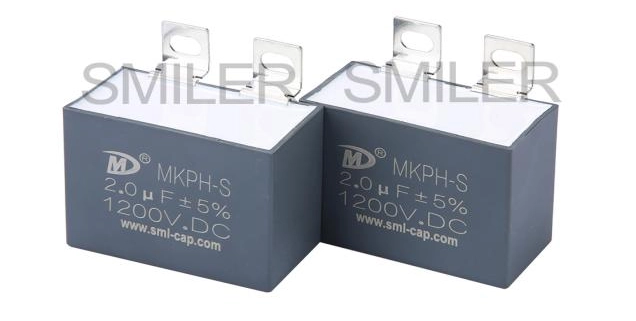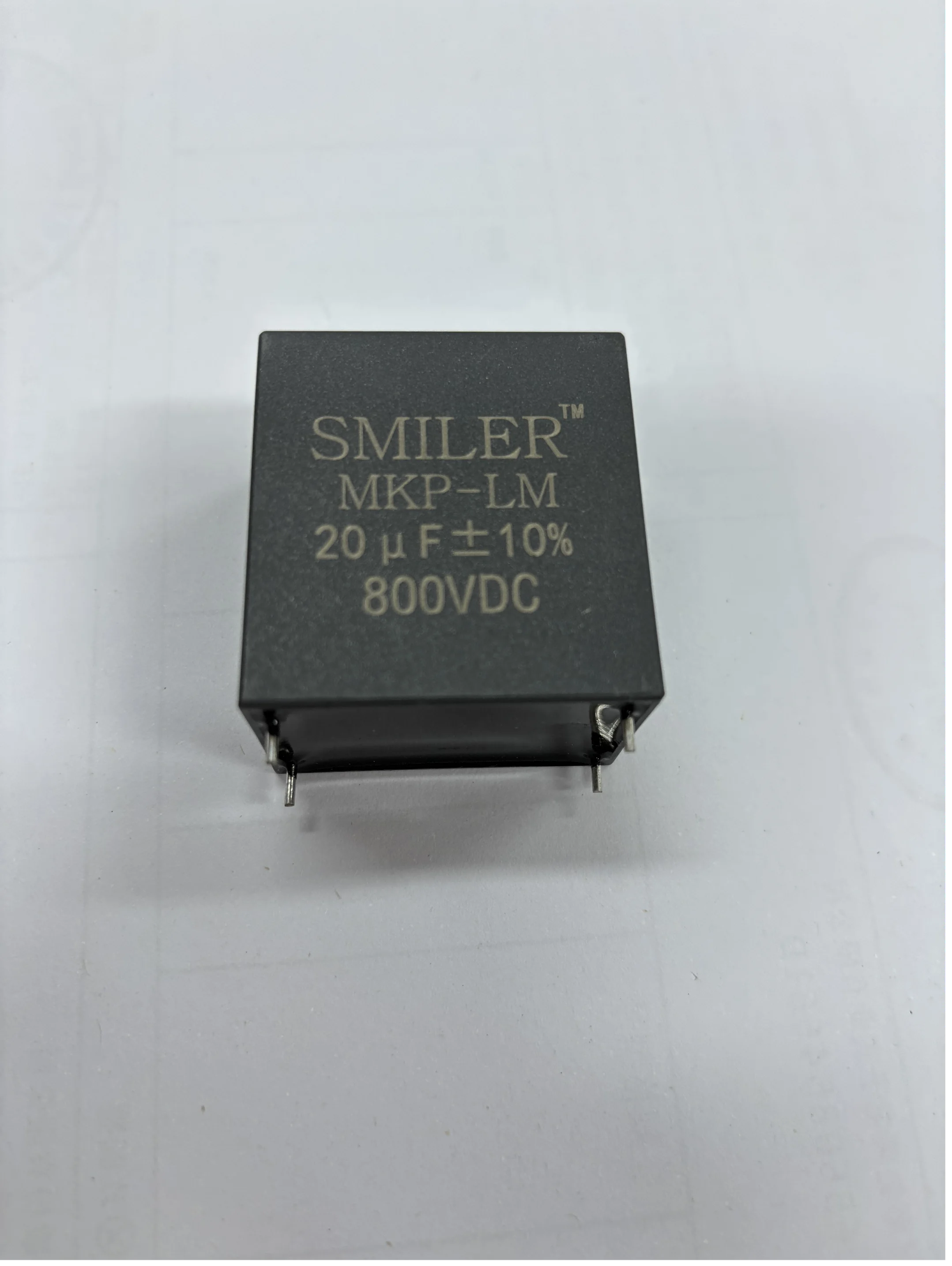Buck converters lower a high voltage to a smaller one. Capacitors are very important in keeping the voltage steady. These converters switch on and off quickly, making uneven voltages. Capacitors smooth this out by storing energy when the voltage is high and releasing it when the voltage is low. This keeps the power going to the device steady and smooth.
Bus capacitors can smooth bus voltage and reduce voltage fluctuations. This is key for delicate devices like processors, sensors, or communication parts. They need steady power to work well.
The input capacitor in a buck converter cleans up high-frequency noise from the power source. It also handles sudden power needs from the switching. The output capacitor keeps the voltage steady for the device. It soaks up uneven currents from the switching and keeps the output stable, even when the device's power needs change.
In the power system, steady bus voltage is important for everything to work right. Both input and output capacitors protect parts, cut down on EMI (electromagnetic interference), and make the system work better.
Choosing the right capacitor depends on the load current, switching frequency, and acceptable voltage ripple. Larger capacitors translate to less ripple but can be larger and more costly. Smaller capacitors can lead to unstable voltage or greater EMI.
For example, in big applications like solar inverters or motor drives in industrial applications, 330μF capacitors with a rating of 500V are common. Capacitor capacity: 330uF; Capacitor rated voltage: 500V; Rated ripple current: ≥ 71.5A. These balance storing energy with low losses from Equivalent Series Resistance (ESR) and inductance.
Boost converters raise a low voltage to a higher one using an inductor, a capacitor, and a switch setup. The capacitor has to deal with big ripple currents from fast charging and discharging.
Rated ripple current: ≥ 71.5A shows how much alternating current a capacitor can take without getting too hot or wearing out. In boost setups for cars or renewable energy, choosing capacitors with high ripple current ratings is important for them to last and work well.
Equivalent Series Resistance (ESR) is the internal resistance in capacitors that generates heat during use. High ESR causes more power loss and less efficiency. This is a problem in boost converters where current jumps are common.
The module capacitor possesses low ESR, hence used for high-speed switching applications where efficient heat management is a concern. Low-ESR capacitors respond very quickly to sudden changes and hold voltage constant during load change.
Yes, having good ESL (Equivalent Series Inductance) and ESR values capacitors help to suppress high-frequency noise caused by rapid switching. This helps to reduce electromagnetic interference (EMI). This is especially important in applications like EV chargers or telecom stations, where EMC compliance is critical.
With the ever-developing power electronics technology, converter technology embodies the characteristics of high intelligence, modularization, and miniaturization, reflecting how low-inductance designs help with small configurations and better control of EMI.

Buck-boost converters can raise or lower voltage depending on the input and output. This dual job puts complex stress on capacitors. They need to work well across a wide range of voltages and handle quick switches between modes.
Devices like battery-powered IoT gadgets or off-grid solar systems often use buck-boost setups because they adapt well. Capacitors here need strong heat resistance, low ESR, and enough capacity to stay efficient with changing loads.
Ceramic capacitors are great for high-frequency tasks and have low ESR. But they can have issues with noise or lose capacity under physical stress. Tantalum capacitors are better for saving space but often have higher ESR than ceramics.
In active settings like robotics or drones, where weight and performance matter, ceramics are often picked for their quick response. Tantalums might be used where space is tight, and a bit higher ESR is okay. Designers need to think about things like vibration, heat changes, or quick power needs when choosing.
Buck-boost converters often work in wide temperature ranges, like cold starts in winter or hot boxes near machines. Ambient temperature: -45~85℃ shows the kind of heat range good capacitors should handle without losing performance.
Thermal stability keeps capacitance steady as temperatures change. This helps maintain control, accuracy, and prevents problems in extreme conditions.
SMILER makes advanced film capacitors for modern power systems in cars, industrial automation, and renewable energy. Our capacitors are designed to meet the needs of these fields with great performance.
SMILER uses special winding methods to make film capacitors that handle big ripple currents without overheating. This is perfect for tough inverter circuits in electric vehicles or wind turbines.
SMILER’s capacitors use advanced methods to get very low ESR. This cuts power losses and helps with quick responses in high-speed converters. It's key for systems that switch fast.

Our products work well from -45°C to +85°C or more, depending on the setup. This makes them reliable in tough conditions, like outdoor solar setups or heavy transport systems.
SMILER film capacitors are used in big projects worldwide. They're in smart grid PCS systems for two-way energy flow. Energy storage converter (PCS): The bidirectional three-level design supports efficient charging and discharging... They're also in next-generation electric vehicle platforms needing small, strong inverter solutions for high currents and hot conditions.
Our capacitors have been shown at events like PCIM Europe. They work with new semiconductors (SiC/GaN) that need strong parts for high voltages and speeds without issues.
img.MKP-LM Series( THB-Type, Plastic case ).webp
With a growing focus on electrification from global goals like Europe's Fit-for-55 plan, engineers need reliable parts that meet strict rules. They also need to improve things like size, weight, lifespan, and EMI control.
SMILER ensures quality with tough testing, like running parts under full power for a long time. We also customize solutions for each project. This makes us a trusted choice for top companies around the world.
Q: What type of capacitor is best suited for buck converters?
A: Low-ESR ceramic or film capacitors are often used. They handle high-frequency switching noise and keep output voltages steady under different loads.
Q: How do I calculate the capacitor value needed for my DC-DC converter?
A: Capacitance depends on output ripple voltage, load current, and switching speed. Use formulas like ΔV = I / (f × C) and consider your project's needs for ripple tolerance.
Q: Can using multiple smaller capacitors be better than one large one?
A: Yes, using smaller capacitors together can lower ESR and ESL. It also spreads heat better, which is helpful when space allows, placing them near key points.
Q: Why does ESR matter so much in converter circuits?
A: High ESR causes heat during ripple current flow. This lowers efficiency and shortens capacitor life due to heat stress over time.
Q: Are electrolytic capacitors suitable for boost converter applications?
A: They give large capacitance for less cost, but their higher ESR makes them less ideal. Pairing them with low-ESR types like ceramics can work for mixed filtering.